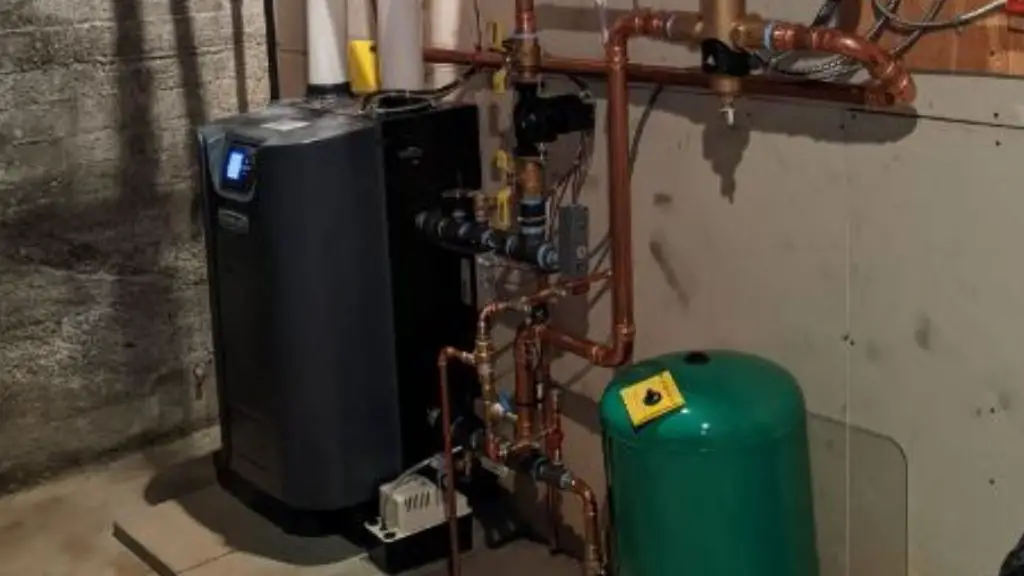The common Weil McLain Ultra boiler problems that users face frequently are ignition fault, blower fault, flame fault, gas valve fault, high-temp lockout, malfunctioning heat exchanger, and water leak.

In this article, we will explore all the above issues in detail and their simple solutions. So, let’s get started…
Table of Contents
- Weil McLain Ultra Boiler Problems [7 Easy Solutions]
- 1. Ignition Fault
- 2. Blower Fault
- 3. Flame Fault
- 4. Gas Valve Fault
- 5. High-Temp Lockout
- 6. Malfunctioning Heat Exchanger
- 7. Water Leak
- FAQ:
- How long do Weil-McLain boilers last?
- Is Weil-McLain a good boiler?
- Where is Weil McLain manufactured?
- Where is the serial number on a Weil Mclain boiler?
- What makes pilot lights go out?
- Conclusion
Weil McLain Ultra Boiler Problems [7 Easy Solutions]
Here’s our Weil McLain ultra troubleshooting guide that will definitely help you to fix your boiler trouble…
Note: You can also read how to fix Crown Boiler problems.
1. Ignition Fault
Weil McLain ultra ignition fault happens when your boiler goes through 5 ignition attempts and never detects a flame. Your boiler will stop answering calls for heat if this happens.
The possible reasons behind ignition failure are faulty gas valve, blocked burner, no gas or low gas pressure, electrode and ignition lead difficulty, fan not turning, and faulty pilot.
Solution:
Follow these guidelines to ensure that the ignition fault is solved.
Step 1: Check for clogging in the condensate trap, which allows condensate to build inside the heat exchanger.
Step 2: Make sure that the ignition cable connection is secured.
Step 3: Steel wool can be used to clean dirty igniters for future usage. Inflammable igniters that have become worn or fouled should be replaced with the appropriate repair component.
Step 4: Flue gas recirculation could cause brown or black deposits. Examine the venting system and termination thoroughly for any leaks or flue gas feedback into the airline.
Step 5: High backpressure and poor ignition are caused by a dirty burner and/or heat exchanger. Clean the burner and heat exchanger.
Step 6: Check the combustion settings on both the high and low fires and make any required adjustments according to the installation instructions.
Step 7: With the boiler turned off and the fire on high, inspect the incoming gas pressure.
Step 8: Ensure that the right boiler type is selected in the control and that high altitude is selected for installations over 5,500 feet.
Step 9: The resistance of the ignition cord should be 1000 Ohms (+/- 50 Ohms). Your ignition cord is faulty if it isn’t within the range of resistance.
2. Blower Fault
Blower fault means that your blower is unable to pick up the required speed or doesn’t completely stop rotating when shut down.
Solution:
To avoid this issue again, you’ll need to take the following measures:
- Check for loose connections and pin engagement at the blower connections and control module in the wire harness.
- Also, inspect the continuity between the blower and the control module by unplugging the connections at both ends. The low-voltage and line voltage harnesses are both linked to the blower.
- With the boiler in standby mode and the blower turned off, examine the Diagnostics-Inputs panel. Replace the blower if the BLOWER SPEED is not 0 RPM.
- Ensure 120V electricity at the blower connector if the blower does not rotate during the ignition procedure. If the blower motor has 120V electricity but does not start, the blower should be replaced.
- Take a look at the control module for power. Replace the control module if 120V is not present when the boiler is turned on.
3. Flame Fault
Weil McLain flame fault happens when your boiler detects a flame when there is none. This could be a result of incorrect combustion.
Solution:
Examine the flame and perform a combustion test. Set the boiler to high-fire. Check the flue gases with a combustion analyzer and make any necessary adjustments. With the burner turned off, look for a flame at the burner using flame current.
Turn off the boiler and keep an eye on the flame through the observation hole. If the flame persists after the gas valve and venturi have been turned off, replace them.
4. Gas Valve Fault
The gas valve fault complication will show up when the control module has detected a problem with its gas valve output circuit.
Solution:
Examine the connections between the gas valve and the control module’s wiring harness. Inspect the resistance between the gas valve and the control.
Low-voltage cables attached to low-voltage field-wired connections should be disconnected. Check for stray voltage on any wire leads from the system.
Gas valve faults are caused by voltages greater than 0.5 volts. Before reconnecting wires, identify the source of stray voltages.
Check to verify that the gas valve fault issue has been resolved after the problem has been resolved. Replace the control module if the lockout occurs again.
5. High-Temp Lockout
When the boiler temperature sensor reaches a preset temperature limit that causes Weil McLain ultra-high temp lockout.
Solution:
You’ll need to perform a manual reset using your boiler’s display. Additionally, you should do the following to prevent future issues.
- Check that all isolation valves are open and that the circulators are properly connected to the control module.
- Inspect that external controls are installed in accordance with the manufacturer’s instructions, all applicable codes, and best industry practices.
- Ensure that the water pipe was installed correctly.
- It is necessary to consider circulator sizing in relation to boiler size and system requirements.
6. Malfunctioning Heat Exchanger
Usually, Weil McLain ultra heat exchanger problems are caused due to corrosion, cracks, and holes, fouling, and overloading of the heat exchanger.
Solution:
In case, your heat exchanger is damaged, you need to replace it. Keep your heat exchanger clean to prevent malfunction.
7. Water Leak
When a boiler leaks water, it’s usually because a seal or a valve has failed. A leaking boiler, on the other hand, can cause other components to corrode. It can also harm the electrical components within the boiler.
Solution:
Check for obvious pipe fittings or joints where the water is coming from. To check, dab the area dry and wait for the water to reappear.
You can use a spanner to turn the connector a quarter turn to check that it prevents your Weil McLain ultra from leaking water. It’s possible that a seal has come free and only requires tightening.
Some seals, however, might wear away due to corrosion, enabling water to escape. In that case, contact Weil McLain ultra-tech support.
FAQ:
How long do Weil-McLain boilers last?
They should endure at least 15 years or longer with proper maintenance.
Is Weil-McLain a good boiler?
It is one of the most efficient boilers out there. Some Weil-McLain boiler systems have a 92 percent efficiency rating.
Where is Weil McLain manufactured?
Manufacturing facilities for the Weil-McLain brand can be found in Michigan City, Indiana, and Eden, North Carolina.
Where is the serial number on a Weil Mclain boiler?
A serial number is printed on either a white or silver label by Weill Mclain. The sticker can be found on the unit’s side panel or inside the front panel.
What makes pilot lights go out?
Pilot lights can go out because of loose or broken gas valves, thermocouples or heat exchangers, improper venting, insufficient gas pressure, or strong winds.
Conclusion
Hopefully, you can now fix your Weil McLain Ultra boiler problems easily. In case, you have any confusion, leave us a comment below. We’d love to help.


My Ultra 155 will not ignite unless the input is partially blocked. It happened during the initial startup and this technique was recommended by the tech support. It ran fine for two years and now, even after service will not ignite without blocking the input . After it ignites, everything seems fine. Any ideas?
Hi Dave
Your boiler needs physical monitoring to find out the main culprit behind the issue. It would be wise to contact the Weil McLain support center to solve it.
Wish you all the best.